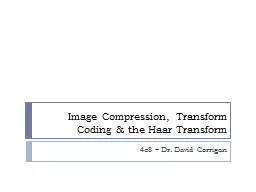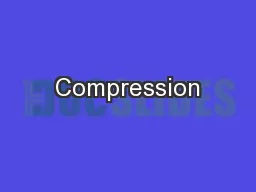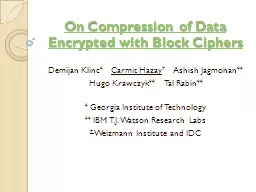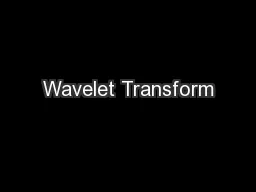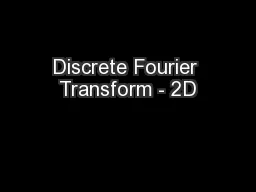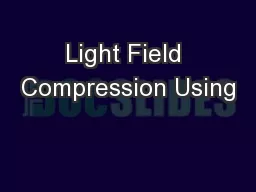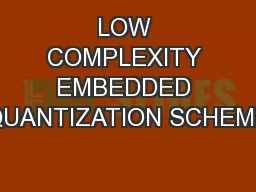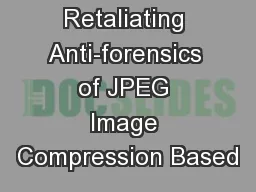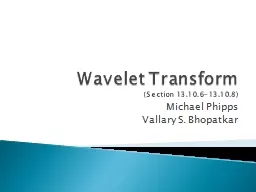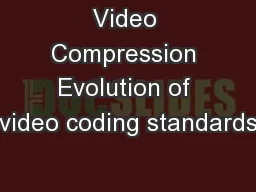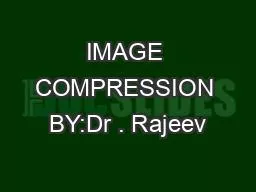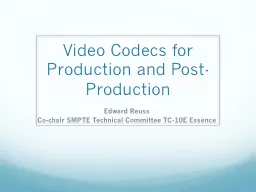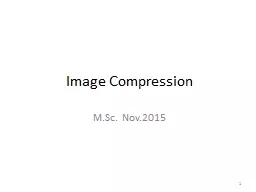PPT-Image Compression, Transform Coding & the
Author : kittie-lecroy | Published Date : 2017-07-29
Haar Transform 4c8 Dr David Corrigan Entropy It all starts with entropy Calculating the Entropy of an Image The entropy of lena is 757 bitspixel approx Huffman
Presentation Embed Code
Download Presentation
Download Presentation The PPT/PDF document "Image Compression, Transform Coding &..." is the property of its rightful owner. Permission is granted to download and print the materials on this website for personal, non-commercial use only, and to display it on your personal computer provided you do not modify the materials and that you retain all copyright notices contained in the materials. By downloading content from our website, you accept the terms of this agreement.
Image Compression, Transform Coding & the: Transcript
Download Rules Of Document
"Image Compression, Transform Coding & the"The content belongs to its owner. You may download and print it for personal use, without modification, and keep all copyright notices. By downloading, you agree to these terms.
Related Documents

